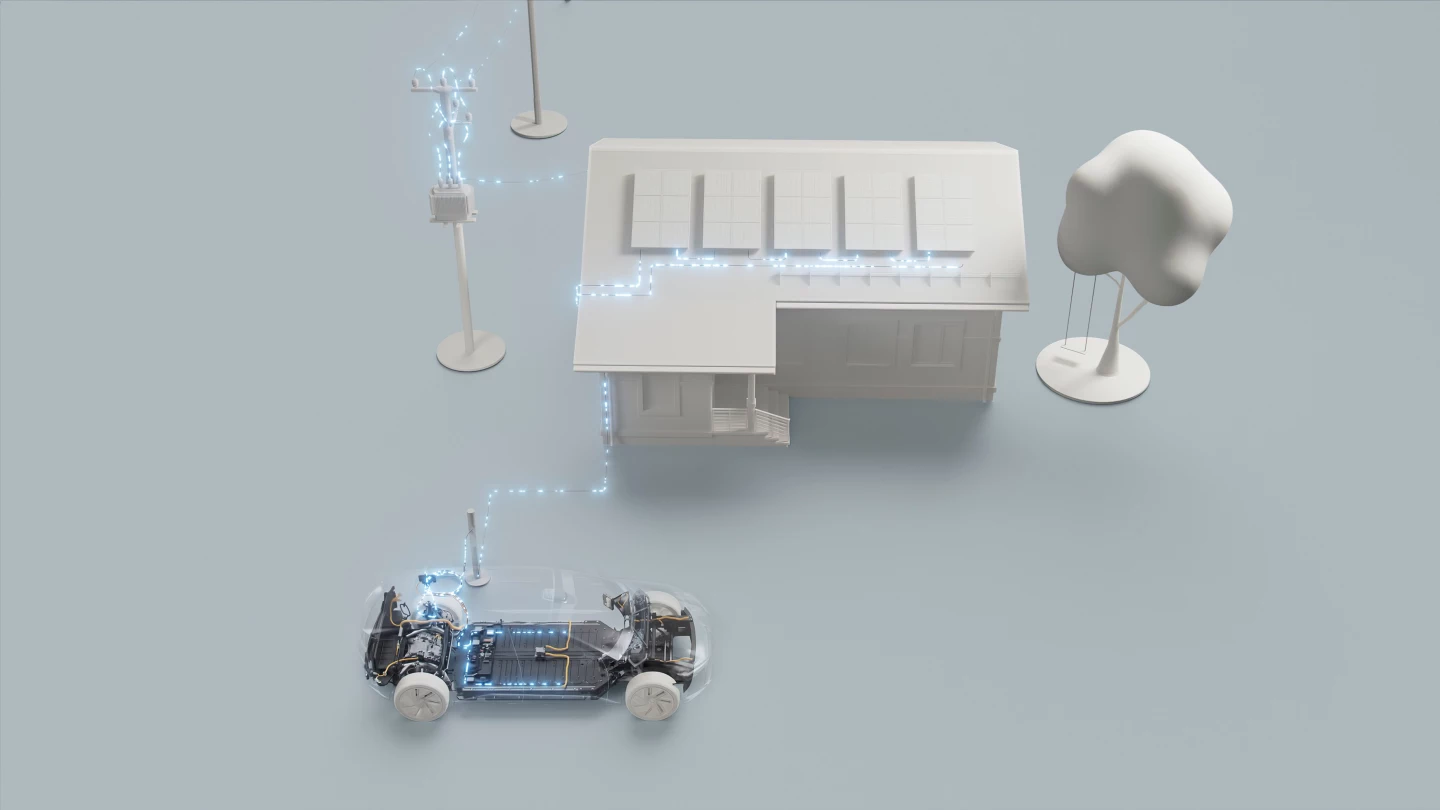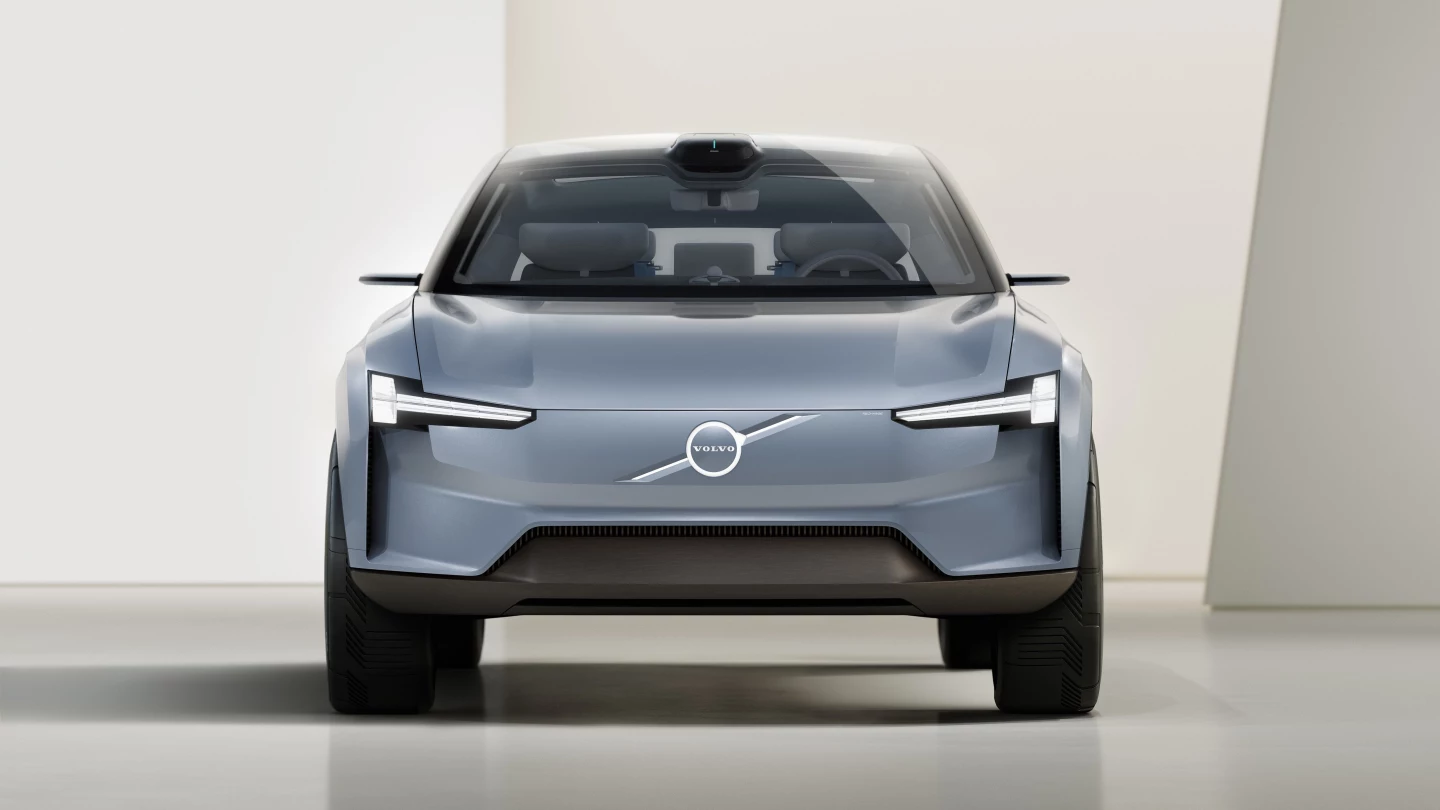Volvo is laying out an ambitious calendar as it moves toward becoming an all-electric premium car brand by 2030. As previewed by the all-new Concept Recharge SUV(ish), the Swedish automaker's next generation of electric vehicles will push toward longer driving ranges, faster, bidirectional charging, and rapidly evolving tech. The Concept Recharge looks quite different from Polestar's future and certainly isn't the prettiest electric car to roll out of the Geely Group, but it represents a step toward giving drivers exactly the type of electric vehicle for which they clamor.
Volvo presented its plans at the Volvo Cars Tech Moment event in Gothenburg this week, focusing attention on how it will mold a new generation of smart, fast-updating electric vehicles that spend more time driving and less time plugged into the charger. The company intends for EVs to make up half its vehicle sales by the middle of this decade, ahead of it becoming a pure-electric brand by 2030.
Volvo isn't merely going electric, it's pushing to develop a series of electric cars that are every bit as convenient and practical as any ICE car. Together with Swedish battery specialist Northvolt, it will more closely pursue lithium-ion battery development, working to achieve 50-percent energy-density gains in support of 621-mile (1,000-km) real-world driving ranges by the latter part of the decade. It will also seek to cut charging times in half and add bidirectional charging capabilities so that electric Volvos can send power back into the grid during peak times and charge during periods of low demand.

"We want to offer our customers sustainable pure electric cars that make their lives easier and more enjoyable. By simplifying the design and integration of our battery cells, we can reduce weight and maximize space, allowing for considerable improvements in battery capacity, range and charging times," said Volvo CTO Henrik Green.
Battery development will be one cornerstone of a vertically integrated strategy in which Volvo brings more of its EV development and engineering in-house. Software is another key component, and Volvo will pull important computer functions from the myriad electronic control units around the vehicle and concentrate them into a single NVIDIA-driven core computing system, which will be introduced in a new model in 2022.

The centralized computing system will run the all-new VolvoCars.OS and receive over-the-air updates more frequently to quickly evolve and improve cars over time. In developing the updates, Volvo will collect real-time customer driving data collected by sensors that include the high-resolution LiDAR, helping to identify issues and roll out improvements and new features more efficiently. The collected data will lessen development time frames from "years to days," helping move Volvo forward toward its goal of zero collisions.
Customers will be able to choose whether or not to share data, Volvo says.
So as not to leave Tech Moment attendees' heads absolutely swimming in clean, green buzzwords and multi-stage plans that leap years and decades into the future, Volvo added a physical component to its presentation. The Concept Recharge serves as a preview of Volvo's greater plans as well as of a flagship SUV that will lead the company's second-gen EV offensive.

With a wheelbase kicked out to the edges, a short hood, vertical tailgate and sloped roofline, Concept Recharge strikes us as a mashup of wagon, utility vehicle and four-door sport hatch. That's far from a compliment as far as aesthetics go, but it's promising as the next evolution of roomy, practical SUV, leveraging the decentralized electric powertrain to maximize space and utility.
Inside, Volvo complements the legroom over the flat floor with plenty of elbow room, afforded by four individual seats with side bolsters and wraparound headrests. Each row of seats is split by a large console with cupholders and storage. There's even under-dashboard luggage space augmenting the cargo capacity of the tailgate. Elimination of the B pillars coupled with coach doors creates a wide entry through which you could practically carry a sofa.

While Volvo doesn't identify the concept's height, it promises a vantage point roughly equivalent to that of existing SUVs like the XC40 and XC90. The driver has less clutter to deal with, eyeing vital driving metrics on a combination of digital instrument panel and head-up display. A next-generation Android OS ties those driver displays together with the floating 15-in infotainment tablet just to the right, providing immediate access to important functions via touch and voice. Volvo will be working with Google on cutting extraneous information, promoting driver attentiveness and safety, and integrating the Android system into the greater VolvoCars.OS architecture.
Back outside, the Recharge loses the expansive front intakes of existing Volvo electrics like the XC40 and C40 Recharge models, gaining a smooth, curved face with central Volvo logo supported by a well-defined crease. The tall, slim intakes at the side direct air around the tires, while thicker Thor's Hammer headlights splash the pavement with light. The prominent LiDAR that features in Volvo's big data plans can be seen rising off the top of the windshield.

“Our Concept Recharge represents a manifesto for the all-electric future of Volvo Cars, as well as a new type of vehicle,” said Robin Page, head of design. “It displays new and modern proportions that go hand-in-hand with increased versatility and shows what technology can enable in terms of design.”
Volvo has but a concept for now, but it sounds like it will reveal the first marketable components of its electrification plans in or ahead of 2022.
Source: Volvo





















